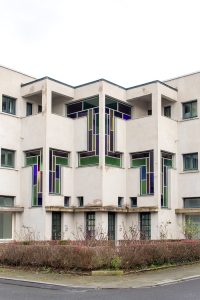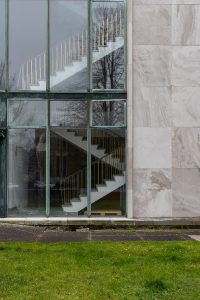Victor (d)evolution
During the interwar period, Victor Bourgeois was known for his radical views and modernistic approach to architecture and urban planning. He believed that architecture and design could play a significant role in creating a more equitable and just society.
Bourgeois was deeply committed to socialist ideals and used his work to advocate for social change. He designed and built a number of social housing projects, including the Garden City of La Roue in Brussels, which was designed to provide affordable and high-quality housing to working-class families. His de- signs were marked by their modernist style, with clean lines, geometric shapes, and an emphasis on functionality.
After the Second World War, Bourgeois adopted a more restrained and servile attitude, perhaps in response to the changing political climate. His work received a less favorable reception during this period, but he continued to believe that his work was valuable and could contribute to the betterment of society.
Despite the challenges he faced, Victor Bourgeois left a lasting legacy in the field of architecture and urban planning. His belief in the power of design to effect change continue to inspire architects around the world.



















